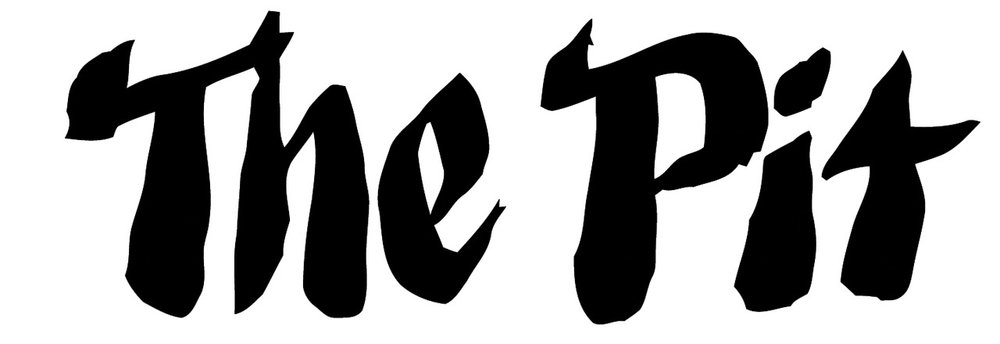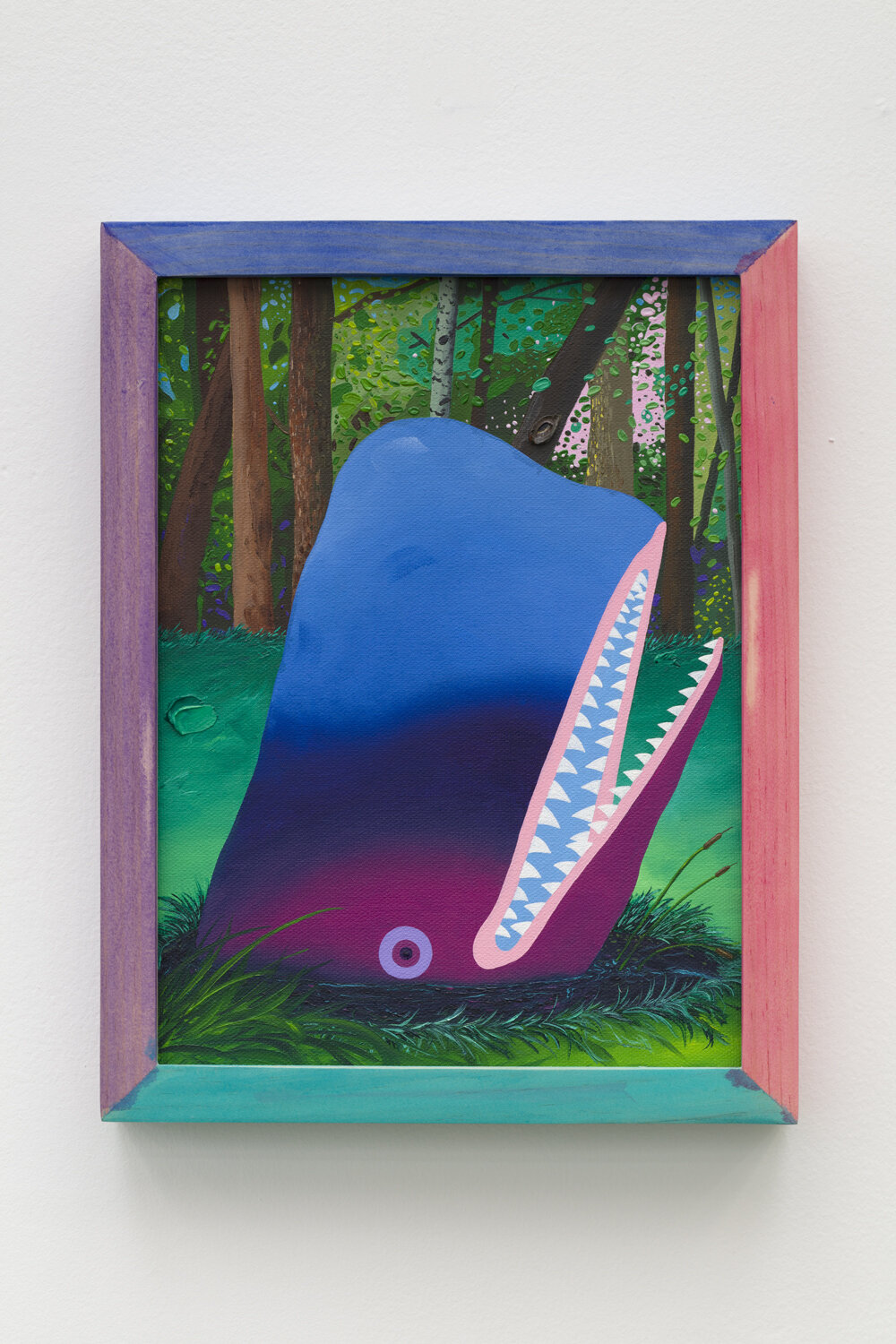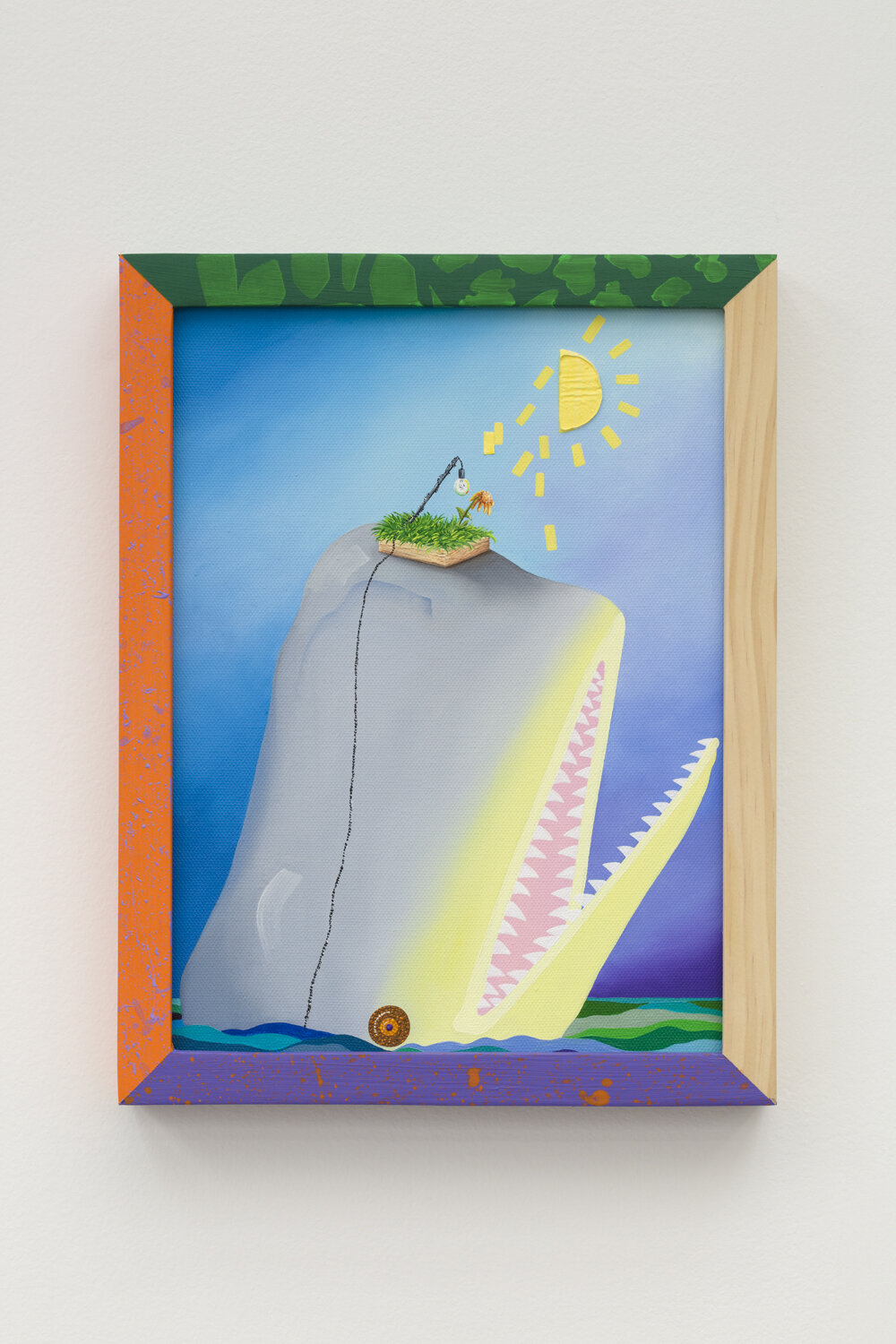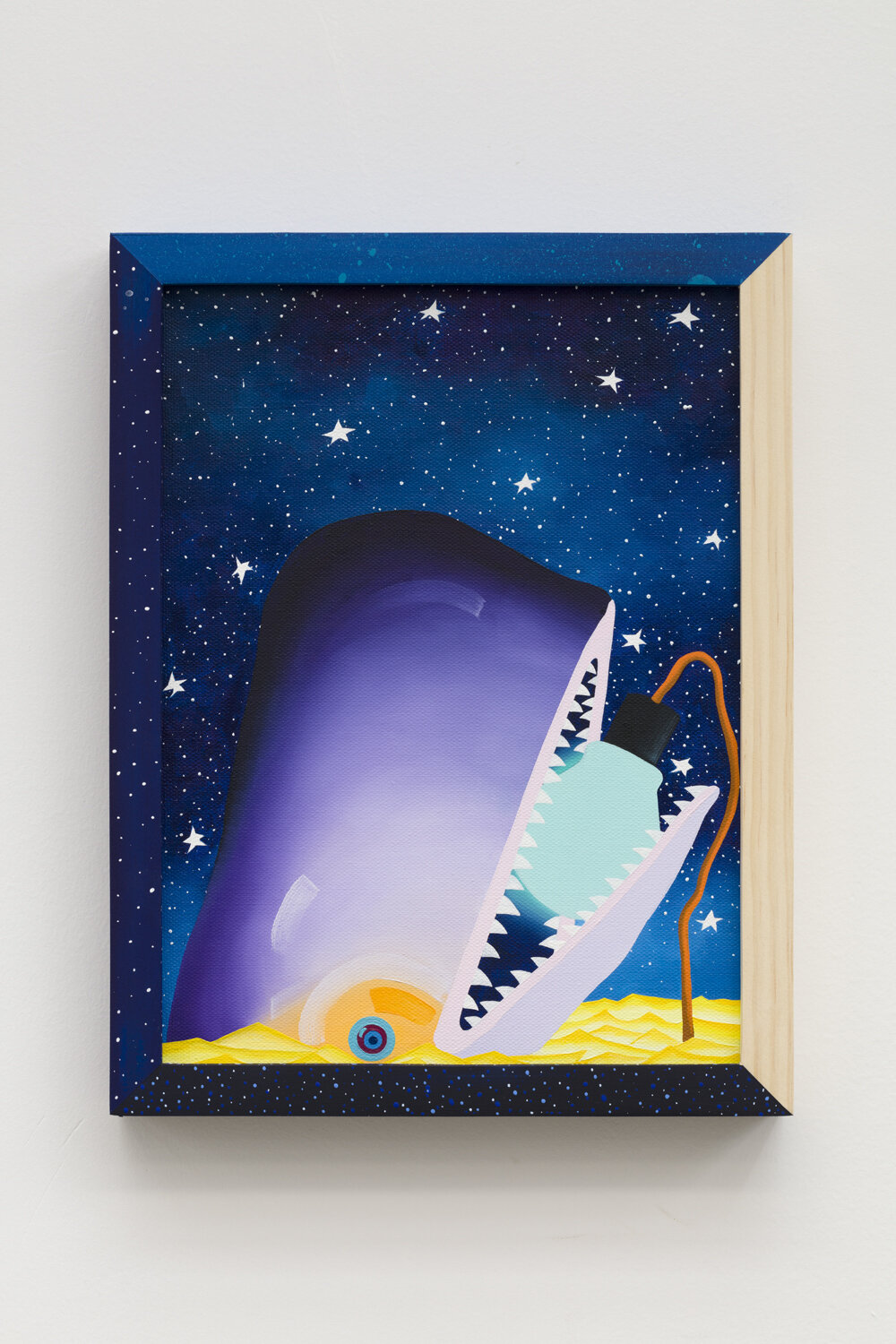Craig Kucia
whales
Craig Kucia
whales
September 15 - October 24, 2020
The Pit is pleased to present whales, a solo exhibition by Los Angeles based painter Craig Kucia. The exhibition will be on view by appointment from September 15 through September 24, 2020. Please make an appointment on our website to view the exhibition.
The latest paintings by Craig Kucia mark the first time this idiosyncratic artist’s practice has taken the shape of a long term investment into a continued subject matter. In this case, the new works all feature the image of a whale, portrayed in profile, emerging from the ocean as the composition’s central motif. The canvases are all intimate in scale, painted in a wide variety of techniques ranging from flat and graphic to thick impasto applications, and all are encased in a hand-painted artist’s frame. Upon first encounter, the viewer is immediately confronted with the image of the whale but it is in the details and compositional subtleties that these paintings become activated; taking on different narrative qualities, emotional impact, and allegorical resonance.
In our culture, it is difficult to see the image of a great whale without recalling Moby Dick, which is exactly the point of Kucia’s latest series. The image of the whale has become an archetypal image casting a long shadow for metaphorical projection. One can’t help but see an image of a cresting whale as a symbol of power or freedom, perhaps an allegory for the struggle of nature amongst a changing planet, or even larger themes of an individual out of step with society. However, upon closer inspection of the details in Kucia’s paintings the relationship to Moby Dick is more explicit. The whale is found in a variety of scenarios and situations, often times surrounded the shattered planks of a boat. Different scenarios cast new narratives for the whale, however one finds it nearly impossible to drift too far from the famous tale of Captain Ahab and his white whale.
One might not know but the novel Moby Dick is based on actual historical events, the disastrous expedition of the whaling ship Essex captained by George Pollard Jr. in 1820 which was sunk by a sperm whale. Moby Dick is routinely thought of as a tale about man vs. nature, or ambition vs. obstacle but the true events that this story is based on is more of a tale of the exploitation of the working class by the wealthy. During the boom of the whaling industry in the United States the wealthy owned the ships, and hired the lower class to go on long sea voyages, risking their lives, in exchange for small wages in attempts to bring back the valuable whales carcasses. Captain George Pollard’s ship was almost immediately damaged, and it is speculated that the ship was unseaworthy. Nearly every step of the journey was a case by case scenario of one person exploiting a situation to disastrous ends. At one point the crew anchored at Charles Island in the Galapagos, after a failed prank resulted in a massive fire nearly the entire island was destroyed with the crew members running through flames to escape. It is believed that the crew’s “prank” resulted in the extinction of both the Floreana Tortoise and the Floreana Mockingbird. The tale ends with cannibalism and the deaths of nearly all of the crew.
As is the case with all symbolic or archetypal imagery there is more beneath the surface of these paintings. A multitude of themes presented by both the novel and historical events can be found embedded in the paintings of Kucia’s whales, and their surroundings. At first these bright small canvases aesthetically give the impression of a light hearted, playful practice but when one begins to sift through the layers of references a variety of different metaphors can be parceled out through Kucia’s on-going series.
Press inquiries please contact info@the-pit.la Sales inquiries please contact adam@the-pit.la




























